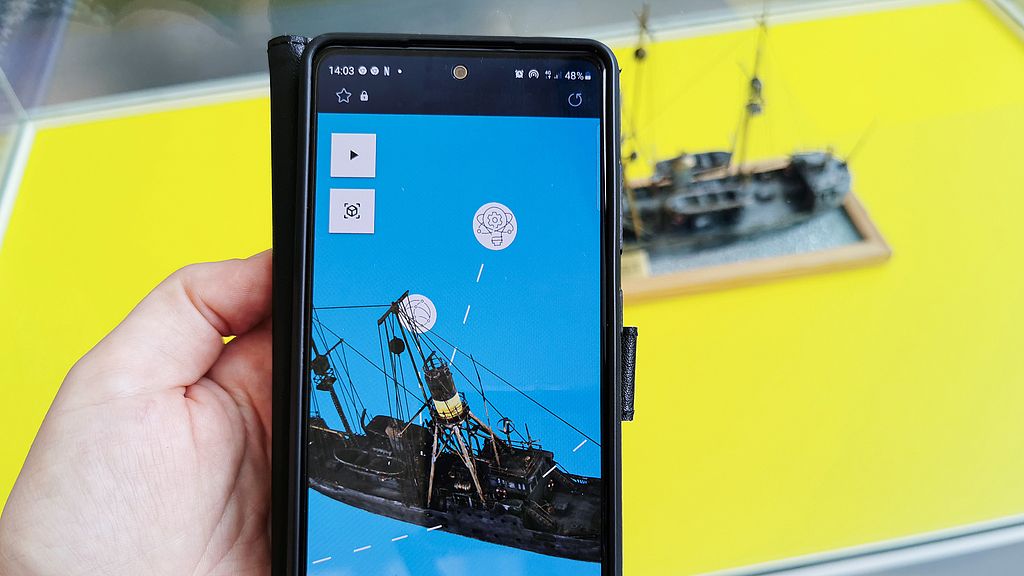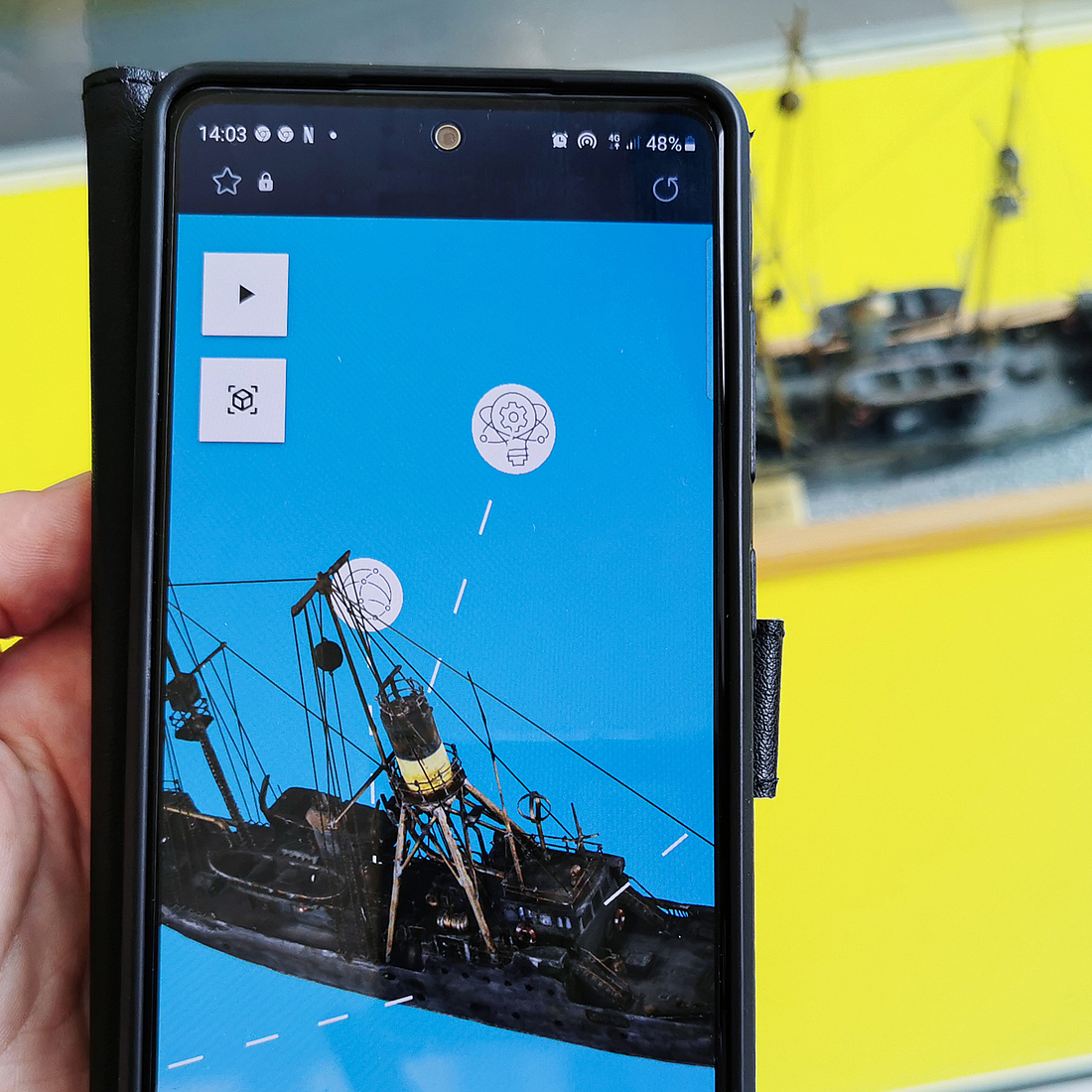Digital on board: live demonstration of 3D acquisition of museum objects
Ship models from the German Maritime Museum (DSM) / Leibniz Institute for Maritime History will soon be just a click away for anyone interested. The digitization team offers exciting experiences with a new 3D application and tests it with visitors.During live demonstrations, guests can have their favorite objects brought along scanned.
An animated cog spilling out of a smartphone on a wave - Dr. Isabella Hodgson from the DSM is pleased with the freshly printed poster motif that points to the new 3D application from the museum. Shortly after the launch of the CHANGE NOW! and INTO THE ICE exhibitions, the in-house digital application is in the starting blocks. Ship models have been scanned and can be explored via mobile devices or desktop. "It was important to us that the app works as a web application. It doesn't have to be downloaded and, of course, it's free so anyone can use it quickly and easily on a mobile device or desktop," Hodgson explains.
The digital curator coordinates the work of programmer Luca Junge and designer Dennis Hoffmann and looks proudly at her smartphone, where the FEHMARNBELT rocks in an animated sea. The detailed digital image can easily be enlarged and rotated with the fingers. Those who select the round icons receive more information about the model's technical data, the original ship and its function. "We have deliberately selected ship models that represent different themes: The CHALLENGER is a research vessel, the FEHMARNBELT was a lightship, and the H. H. MEIER was a sea rescue cruiser. The ship types enable us to show the different facets of shipping and use them as examples to explain physical processes, aspects of navigation or safety," says the digitization expert. Furthermore, a container ship, a historic passenger steamer and the ship's equipment of the BESAN EWER ANNA can be explored.
She is curious to see how guests and users will react to the application. The new digital experience brings the object close to the viewers. "An app thrives on the ideas of its users, so we're relying on guests and their opinions," Hodgson says. She would like to see the app used in schools at a later date. Learners and teachers can view the 3D models and work out new knowledge based on the information, which can also be filed in the app: "In this way, new aspects on the subject of shipping are constantly being added."
Before the app moves into the classroom, the digital team would like to introduce it to museum guests. On Saturday, March 26, from 5 to 6:30 p.m., Hodgson will provide insights into how digitization works at the Maritime Museum. She will also demonstrate the app and perform live digitizing. "Anyone who wants to can bring a 20- to 30-inch object to get a digital image." Additional tours are scheduled for May 8 and 22.
Live demonstration, "From 3D Scan to AR Experience."
Saturday, March 26, from 5 to 6:30 p.m,
Sunday, May 8, from 11 a.m. to 12:30 p.m,
Sunday, May 22, from 1 to 2:30 p.m.
Attendance is free, just book a time slot ticket at www.dsm.museum/ticket.


